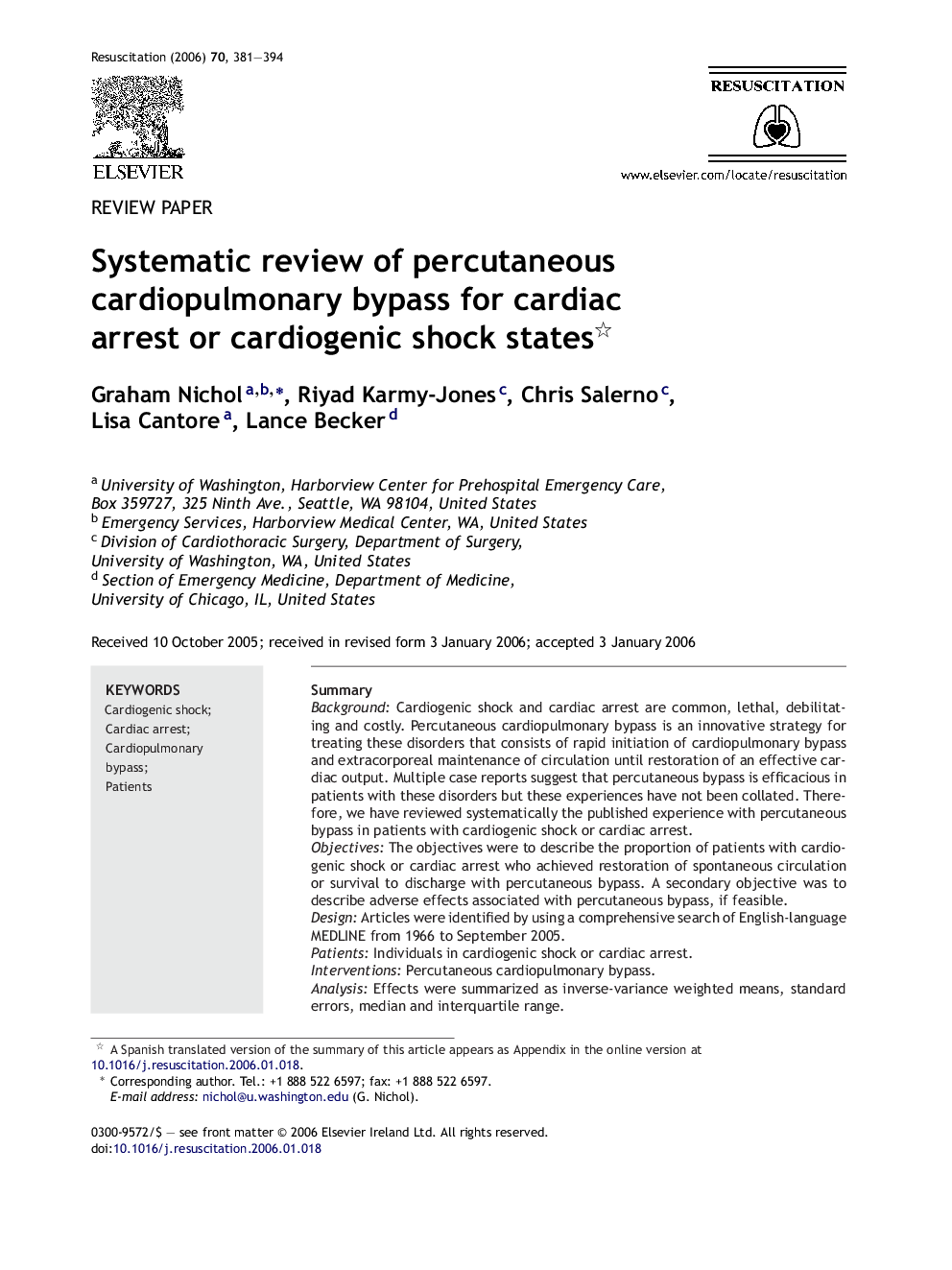| Article ID | Journal | Published Year | Pages | File Type |
|---|---|---|---|---|
| 3010984 | Resuscitation | 2006 | 14 Pages |
SummaryBackgroundCardiogenic shock and cardiac arrest are common, lethal, debilitating and costly. Percutaneous cardiopulmonary bypass is an innovative strategy for treating these disorders that consists of rapid initiation of cardiopulmonary bypass and extracorporeal maintenance of circulation until restoration of an effective cardiac output. Multiple case reports suggest that percutaneous bypass is efficacious in patients with these disorders but these experiences have not been collated. Therefore, we have reviewed systematically the published experience with percutaneous bypass in patients with cardiogenic shock or cardiac arrest.ObjectivesThe objectives were to describe the proportion of patients with cardiogenic shock or cardiac arrest who achieved restoration of spontaneous circulation or survival to discharge with percutaneous bypass. A secondary objective was to describe adverse effects associated with percutaneous bypass, if feasible.DesignArticles were identified by using a comprehensive search of English-language MEDLINE from 1966 to September 2005.PatientsIndividuals in cardiogenic shock or cardiac arrest.InterventionsPercutaneous cardiopulmonary bypass.AnalysisEffects were summarized as inverse-variance weighted means, standard errors, median and interquartile range.ResultsIncluded were 85 studies of 1494 patients with cardiogenic shock, cardiac arrest or both. Studies were case reports, case-series or case-control studies of heterogeneous interventions in heterogeneous patients. The proportion of patients weaned was mean, 76.8 ± 4.2%, and median, 66.0% (IQR 50%, 100%). The proportion of patients who survived to discharge was mean, 47.4 ± 4.5%, and median 40.0% (IQR 20%, 75%). Fifty-two studies included 533 patients in cardiogenic shock. The proportion of patients who survived to discharge was mean, 51.6 ± 6.5%, and median 38.5% (IQR 23.4%, 76.3%). Fifty-four studies included 675 patients in cardiac arrest. The proportion of patients who survived to discharge was mean, 44.9 ± 6.7%, and median, 42.3% (IQR 15.4%, 75%). Five studies with 286 subjects had both patients with cardiogenic shock or cardiac arrest.ConclusionsPercutaneous bypass is an efficacious intervention in patients with cardiac arrest or cardiogenic shock. Adequately-powered experimental studies of current percutaneous bypass technologies are required to demonstrate whether it is safe, effective and cost-effective.
